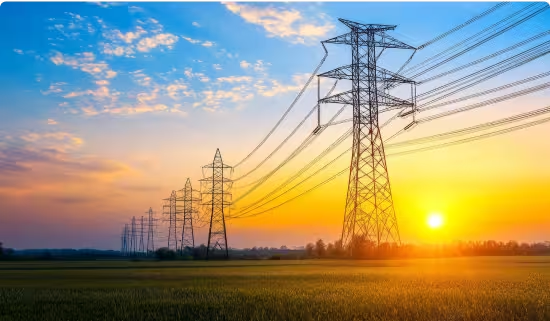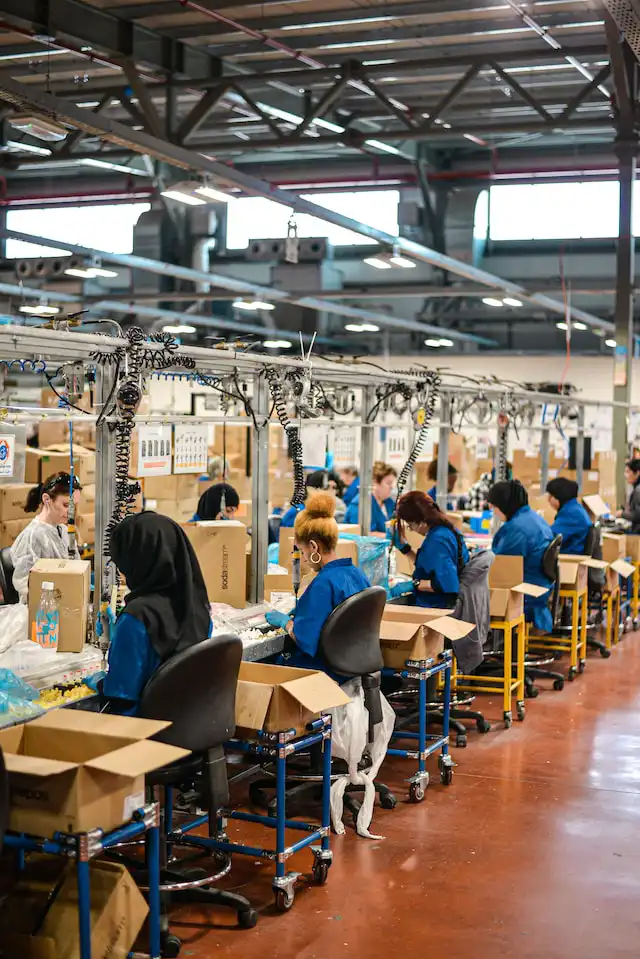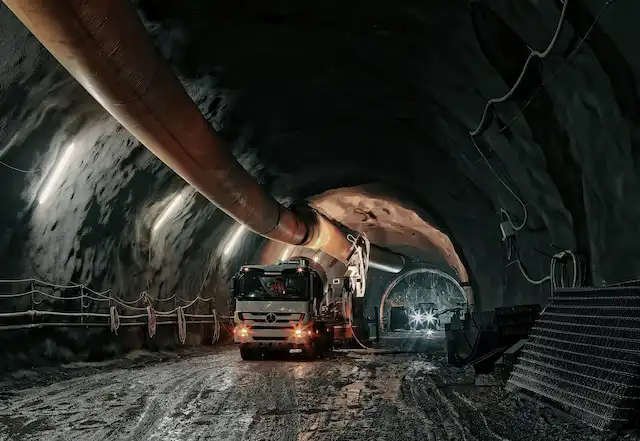
India Industrial Lubricants Market Outlook to 2023
Expected Tailwinds from Construction, Automotive and Tire Manufacturing along with Surging Penetration from International Companies
Region:Asia
Product Code:KR747
January 2019
213
About the Report
The report titled "India Industrial Lubricants Market Outlook to 2023 – Expected Tailwinds from Construction, Automotive and Tire Manufacturing along with Surging Penetration from International Companies" provides information on overview of the industrial lubricants market in India, market size by revenue and by sales volume, segmentation by origin (mineral, semi-synthetic and synthetic lubricants), by type of industrial lubricants (hydraulic oil, metal working fluids, industrial gear oils, turbine oils, compressor oils, industrial greases and others), by industrial end use (construction, mining and off-highway equipment; iron and non-iron production; general manufacturing, textile and chemicals; engineering equipment, automotive sector, power generation, cement and others), by type of distribution channel (direct sales and dealer network),by regional sales (north, south, east and west) and by basis of packaging (barrels, drums and tanker load; and smaller packs). The report also covers competition landscape, trends and developments, issues and challenges, end user analysis and government regulations pertaining to lubricants segment in India. The report concludes with future outlook of industrial lubricants in and certain recommendations highlighting the success factors for entering and expanding in the market. The report is useful for industrial lubricant importers and manufacturers along with end users including plastic manufacturers, metal working companies, auto and auto component manufacturers, construction companies, textile, cement, mining, paper and pulp manufacturers, power generation companies, steel manufacturers and food & beverage companies.

India Industrial Lubricants Market Size and Overview
The industrial lubricants market in India has reached its maturity stage, therefore meeting demand expectations of every end user industry (construction and mining, metal production, power generation, general manufacturing, food processing, pharmaceuticals and cosmetics) majorly by importing base oil from foreign countries and by domestically producing lubricants within India. Over the review period, India industrial observed a healthy growth both in terms of revenues as well as consumption volume. Rising concerns from major industries regarding the maintenance of machineries in order to provide a better quality output has escalated the demand for synthetic and semi-synthetic lubricants in the country. After facing an economic slowdown during the period FY’2016-2017 owing to temporary disruptions caused by demonetization & GST implementation; the market recovered in the FY’2018 with uniform cash flows, easy taxation as well as further growth in India’s manufacturing industry.
Market Segmentation
By Origin (Mineral, Semi-Synthetic and Synthetic Lubricants): Mineral oil based lubricants were witnessed to dominate India industrial lubes market during FY’2018. These types of lubricants have been gaining traction in India majorly due to its economical price over semi-synthetic and synthetic types which are costlier as they require highly refined base oil and high quality additives that add to cost of production of these lubricants. The remaining market was collectively captured by synthetic and semi-synthetic lubricants.
By Type of Industrial Lubricants (Hydraulic Oil, Metal Working Fluids, Industrial Gear Oils, Turbine Oils, Compressor Oils, Industrial Greases and Others): Hydraulic oils established itself as market leader in the India industrial lubricants market owing to their greater index of viscosity, higher bulk modulus, hydrolytic stability, resistance to wear and demulsification. Other lubricant types including metal working fluids, industrial gear oils, turbine oils, compressor oils, industrial greases and others captured the remaining market in the FY’2018.
By Industrial End Use (Construction, mining and off-highway equipment; iron and non-iron production; general manufacturing, textile & chemicals; engineering equipment, automotive sector, power generation, cement and others): The usage of industrial lubricants in India was observed to be high in construction, mining and off-highway equipment sector. As India’s construction and mining sector are catching up fast with its global counter-parts in terms of technological advancements, the demand for hydraulic oil has shifted from not just being volume driven but more of value based. The remaining market was captured by industrial end users such as iron and non-iron production, general manufacturing, textile and chemicals; engineering equipment, automotive sector, power generation, cement and others respectively during FY’2018.
By Type of Distribution Channel (Direct Sales and Dealer Network): Direct sales were majorly used by PSU OMCs and international private players in India. Companies prefer selling lubricants directly to customers than via dealers as payments are highly irregular from dealer network.
By Regional Sales (North, South, East and West): The northern and southern regions in India were witnessed to dominate the country’s industrial lubes market in FY’2018. In accordance with the Department of Industrial Policy and Promotion (DIPP), the Indian government has been mapping out industrial parks and coastal and SEZs and has revealed a total of 1,850 such projects owned by the centre and other states collectively. On the other hand, west and east side states grabbed the remaining market during FY’2018.
By Basis of Packaging (Barrels, Drums and Tanker load; and Smaller Packs): Barrels, drums and tanker load were witnessed to dominate the lube packaging in India industrial lubricants market in the FY’2018. They have a holding capacity of 200 or 210 litres. Smaller packs with a holding capacity of 20 or 26 litres captured the remaining market in the FY’2018.
Competitive Landscape in India Industrial Lubricants Market
Competition stage in the country’s industrial lubes segment was witnessed to be moderately concentrated along with presence of major PSU OMCs which captured over half of the domestic consumption of industrial lubricants in India during FY’2018. Post liberalization, India industrial lubes market witnessed emergence of various international as well as domestic players owing to high growth potential of industrial lubricants in the country. Some of the major players operating within this segment include IOCL, HPCL, BPCL, Shell, Gandhar Lubes, Exxon Mobil, Gulf petrochem (IPOL), Apar Industries and others. Pricing, brand value as well as marketing strategies adopted by a particular company are considered as of high importance in order to reach a wider target audience in the country.
India Industrial Lubricants Market Future Outlook and Projections
India industrial lubricants market will prepare itself to meet the future demand anticipated to emerge from the substantial investment proposed in key lubricating segments such as synthetic & semi-synthetic lubricants and bio-based lubricants along with emerging new industrial uses. The “Make-in-India” initiative launched by the Indian government with the primary goal of making India a global manufacturing hub, by encouraging both multi-national and domestic companies to manufacture their products within the country will drive forecasted revenues and sales volume in the next 5 fiscal years. India has been emerging as one of the leading producers of key industrial ores and minerals. With more equipment being put into action, the higher will be the demand for industrial lubricants for efficient and productive operation of mining equipment as they are used under extreme temperature/pressure conditions which would require regular lubrication.
Key Topics Covered in the Report
- Executive Summary
- Research Methodology
- India Industrial Lubricants Market Overview and Genesis
- India Industrial Lubricants Market Ecosystem
- Value Chain Analysis in India Industrial Lubricants Market
- India Industrial Lubricants Market Size, FY’2013-FY’2018
- India Industrial Lubricants Market Segmentation, FY’2018
- Regulatory Landscape in India Industrial Lubricants Market
- Trends and Developments in India Industrial Lubricants Market
- Issues and Challenges in India Industrial Lubricants Market
- End User Analysis in India Industrial Lubricants Market
- Competitive Landscape in India Industrial Lubricants Market
- India Industrial Lubricants Market Future Outlook and Projections, FY’2018-FY’2023E
- Analyst Recommendation in India Industrial Lubricants Market
Products
Key Target Audience:
- Plastic Manufacturers
- Metal Working Companies
- Auto And Auto Component Manufacturers
- Construction Companies
- Textile Companies
- Cement Companies
- Mining Companies
- Paper and Pulp Manufacturers
- Power Generation Companies
- Steel Manufacturers
- Food & Beverage Companies
Time Period Captured in the Report:
- Historical Period – FY’2013-FY’2018
- Forecast Period – FY’2018-FY2023E
Companies
Key Segments Covered:
By Origin
Mineral based Lubricants
Semi-Synthetic Lubricants
Synthetic Lubricants
By Type of Industrial Lubricants
Hydraulic Oil
Metal Working Fluids
Industrial Gear Oils
Turbine Oils
Compressor Oils
Industrial Greases
Others (Synthetic gear lubricants, synthetic EP gear lubricants, synthetic polyglycol gear lubricants, compound gear lubricants, and food grade gear lubricants)
By Industrial End Use
Construction, mining and off-highway equipment
Iron and non-iron production
General manufacturing, textile & chemicals
Engineering equipment
Automotive sector
Power generation
Cement
Others (plastic, paper and pulp and steel)
By Type of Distribution Channel
Direct Sales
Dealer Network
By Regional Sales
North
South
East
West
By Basis of Packaging
Barrels, Drums and Tanker load
Smaller Packs
Companies Covered:
Indian Oil Corporation Limited
Hindustan Petroleum Corporation Limited
Bharat Petroleum Corporation Limited
Shell India
Gandhar Lubes
Exxon Mobil
Raj Lubricants
Gulf Petrochem (IPOL)
Apar Industries
Balmer and Lawrie
Castrol
Total (Company)
Savita Oil
Valvoline cumins
GS Caltex
Gulf Oil Lubricants
Veedol Lubricants (Tide Water Oil)
Others (Universal Halwasiya Group – UHG, Chemoleum, Fuch, Kluber, Starol and remaining local manufacturers)
Table of Contents
1. Executive Summary
1.1. India Industrial Lubricants Market Overview and Size
1.2. India Industrial Lubricants Market Segmentation
1.3. Competitive Landscape in India Industrial Lubricants Market
1.4. India Industrial Lubricants Market Future Outlook and Projections
2. Research Methodology
2.1. Market Definitions
2.2. Abbreviations
2.3. Market Size and Modeling
Consolidated Research Approach
Market Sizing – India Industrial Lubricants Market
Variables (Dependent and Independent)
Multi Factor Based Sensitivity Model
Regression Matrix
Limitations
Final Conclusion
3. India Industrial Lubricants Market Overview and Genesis
4. India Industrial Lubricants Market Ecosystem
4.1. Supply Side of India Industrial Lubricants Market Ecosystem
4.2. Demand Side of India Industrial Lubricants Market Ecosystem
5. Value Chain Analysis in India Industrial Lubricants Market
5.1. Major Entities Involved in the Value Chain
5.2. Major Problems in the Value Chain
Key Trend of Raw Material Prices in India
Industrial Clusters of India
Marketing Strategies adopted by National Oil Companies in India
Industrial Lubricant Manufacturing Process in India
6. India Industrial Lubricants Market Size, FY’2013-FY’2018
6.1. By Revenues and Sales Volume, FY’2013-FY’2018
7. India Industrial Lubricants Market Segmentation, FY’2018
7.1. By Origin (Mineral Lubricant, Semi-Synthetic Lubricant and Synthetic Lubricant), FY’2018
7.2. By Type of Industrial Lubricants (Hydraulic Oils, Metal Working Fluids, Industrial Gear
Oils, Turbine Oils, Compressor Oils, Industrial Greases and Others), FY’2018
Hydraulic Oil
Metal Working FLuids
Industrial Gear Oils
Turbine Oil
Compressor Oil
Industrial Greases
7.3. By Industrial End Uses (Construction and Mining and Off- Highway Equipment, Iron and Non-Iron Production, General
Manufacturing, Textile and Chemicals; Engineering Equipment, Automotive Sector, Power Generation and Others), FY’2018
7.4. By Type of Distribution Channels (Direct Sales and Dealer Network), FY’2018
7.5. By Regional Sales (North, West, South and East), FY’2018
7.6. By Basis of Packaging (Barrels, Drums and Tanker Load; and Smaller Packs), FY’2018
8. Regulatory Landscape in India Industrial Lubricants Market
9. Trends and Developments in India Industrial Lubricants Market
9.1. Rapid Industrialization in India
9.2. Increasing Consumption of Synthetic and Semi-Synthetic Lubricants in India
9.3. Recycling of Industrial Lubricant Oil / Used Oil Management
9.4. New Industry Establishments
9.5 Focus on Industrial Enegy Efficiency in India
9.6. Emergence of Bio-Based Lubricants in India
10. Issues and Challenges in India Industrial Lubricants Market
10.1. Rising Environmental Concerns regarding Use, Disposal and Recycling of Industrial Lubricants
10.2. Volatality in Crude Oil Prices will affect final price of lubricants
11. End User Analysis in India Industrial Lubricants Market
11.1. Decision Making Process
Decision Making Criteria
Pain Points Faced
11.2. Major End User Applications
11.2.1. Plastics: Injection Molding Machines
Lubricant Parameters
Procurement Process
Industry Growth, FY’2013-FY’2018
Future Potential
11.2.2. Metal Working (Water Soluble and System Fluids; and Neat Cutting Oils)
Lubricant Parameters
Procurement Process
Industry Growth
Future Potential
11.2.3. General Engineering: Vendors of Auto Components
Lubricating Parameters
Procurement Process
Industry Growth, FY’2013-FY’2018
Future Potential, FY’2019E-FY’2023E
11.2.4. Construction
Lubricant Parameters
Procurement Process
Industry Growth, FY’2013-FY’2018
Future Potential, FY’2019E-FY’2023E
11.2.5. Textile
Lubricant Parameters
Procurement Process
Industry Growth, FY’2013-FY’2018(P)
Future Potential, FY’2019E-FY’2023E
11.2.6. Cement
Lubricating Parameters
Procurement Process
Industry Growth, FY’2013-FY’2018
Future Potential, FY’2019E-FY’2023E
11.2.7. Mining
Lubricant Parameters
Procurement Process
Industry Growth, FY’2013-FY’2018
Future Potential, FY’2019E-FY’2023E
11.2.8. Paper and Pulp
Lubricant Parameters
Procurement Process
Industry Growth, FY’2013-FY’2018
Future Potential
11.2.9. Power Generation
Lubricant Parameters
Procurement Process
Industry Growth, FY’2013-FY’2018
Future Potential, FY’2019E-FY’2023E
11.2.10. Steel
Lubricant Parameters
Procurement Process
Industry Growth, FY’2013-FY’2018(P)
Future Potential, FY’2019E-FY’2023E
11.2.11. Food and Beverage
Lubricating Parameters
Procurement Process
Industry Growth, FY’2013-FY’2018(P)
Future Potential, FY’2019E-FY’2023E
12. Competitive Landscape in India Industrial Lubricants Market
12.1. Competition Scenario in India Industrial Lubricants Market
12.2. Market Share of Major Players Operating in India Industrial Lubricants Market
12.3. Company Profiles of Major Players Operating in India Industrial Lubricants Market
12.3.1. Indian Oil Corporation Limited (IOCL), India
12.3.2. Hindustan Petroleum Corporation Limited (HPCL), India
12.3.3. Bharat Petroleum Corporation Limited (BPCL)
12.3.4. Shell India Pvt. Ltd
12.3.5. Gandhar Lubes
12.3.6. Gulf Petrochem (IPOL)
12.3.7. Apar Industries
12.3.8. Other Players (Balmer and Lawrie, Castrol, Total Co., Savita Oil, Raj Lubricants,
Valvoline Cummins, GS Caltex, Gulf Oil Lubricants and Veedol Lubricants (Tide Water Oil)) Operating in India Industrial Lubricants Market
13. India Industrial Lubricants Market Future Outlook and Projections, FY’2018-FY’2023E
13.1. By Revenue and Sales Volume, FY’2018-FY’2023E
Make-in-India Initiative
13.2. By Segments, FY’2023E
13.2.1. By Origin (Mineral, Semi-Synthetic; and Synthetic and Bio-Based Lubricants), FY’2023E
13.2.2. By Type of Industrial Lubricant (Hydraulic oils, Metal Working Fluids, Industrial Gear
oils, Turbine oils, Compressor Oils,
Industrial Greases and Others), FY’2023E
13.2.3. By Industrial End Uses (Construction and Mining and Off-Highway Equipment, Iron and Non-Iron Production, Engineering
Equipment, Automotive Sector, General Manufacturing, Textile and Chemicals, Power Generation and Others), FY’2023E
14. Analyst Recommendation in India Industrial Lubricants Market
14.1. Develop Industrial Lubricants for Construction and Mining based Applications
14.2. Sales and Promotion / Advertising of Lubricants
14.3. Facilities for Refining of Used Oil, Recycling and Effective Disposal
14.4. Focus on Improving Logistics Infrastructure
14.5. Investment in Research and Development
Disclaimer Contact UsWhy Buy From Us?

What makes us stand out is that our consultants follows Robust, Refine and Result (RRR) methodology. i.e. Robust for clear definitions, approaches and sanity checking, Refine for differentiating respondents facts and opinions and Result for presenting data with story

We have set a benchmark in the industry by offering our clients with syndicated and customized market research reports featuring coverage of entire market as well as meticulous research and analyst insights.

While we don't replace traditional research, we flip the method upside down. Our dual approach of Top Bottom & Bottom Top ensures quality deliverable by not just verifying company fundamentals but also looking at the sector and macroeconomic factors.

With one step in the future, our research team constantly tries to show you the bigger picture. We help with some of the tough questions you may encounter along the way: How is the industry positioned? Best marketing channel? KPI's of competitors? By aligning every element, we help maximize success.

Our report gives you instant access to the answers and sources that other companies might choose to hide. We elaborate each steps of research methodology we have used and showcase you the sample size to earn your trust.

If you need any support, we are here! We pride ourselves on universe strength, data quality, and quick, friendly, and professional service.















